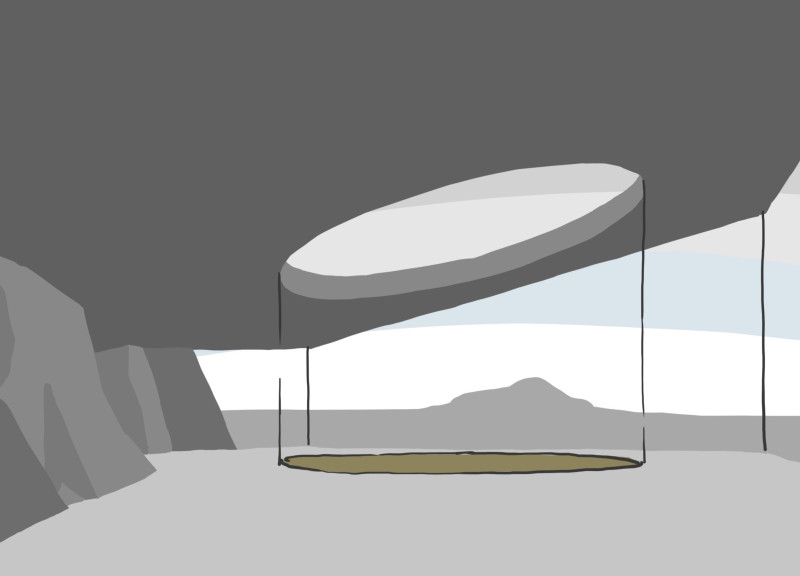5 key facts about this project
This architectural project encompasses a café and information center situated near Hverfjall, a volcanic crater in Iceland. The design aims to enhance visitor experiences while underscoring the geological significance of the site. Extensive attention has been given to ensuring that both the aesthetic and functional aspects of the building align with the natural landscape.
The structure is engineered to accommodate diverse visitor activities, including dining, educational exhibitions, and relaxation. The layout promotes a fluid flow of movement, allowing visitors to engage with both the facility and its surroundings seamlessly. By integrating practical spaces with visual dialogue, the project serves as an essential resource for both visitors and the local community.
Design Integration with the Landscape
The architectural design actively engages with the topography of the site. The building's form reflects the undulating landscape of the area, characterized by a series of overlapping geometric volumes. This design choice not only contributes to the building's visual appeal but also helps it blend harmoniously with the natural environment. The café features a dynamic roof structure that appears to float, creating sheltered areas while maximizing natural light and views of Hverfjall.
Materiality plays a significant role in this project. The use of tephra stone—derived from the volcanic site—establishes a direct connection to the geography. Besides, wooden composite structures offer durability and warmth, while extensive glass panels facilitate interaction with the environment, providing unobstructed vistas for visitors. This combination of materials enhances both functionality and aesthetic value.
Focus on User Experience
The project prioritizes visitor engagement through thoughtfully designed spaces. The typical program includes areas for dining, informational displays about the volcano, and comfortable seating for relaxation. Specific attention has been placed on creating outdoor areas that allow visitors to immerse themselves in the surrounding landscape comfortably.
Unique to this project is the philosophical dimension integrated into the design. It encourages users to consider their relationship with the natural world, particularly the scale of their experience in relation to Hverfjall. By situating the building in proximity to hiking trails, it benefits from high foot traffic while still providing quiet spaces for contemplation.
The architectural plans and sections reveal a comprehensive strategy to leverage the topography and climate conditions. By examining these details further, one can grasp the full scope of the project’s architectural ideas and spatial relationships.
To gain deeper insights into the architectural designs, plans, and sections, readers are encouraged to explore the project presentation in more detail. This will provide a clearer understanding of how the café and information center near Hverfjall stands as a significant addition to Iceland's cultural landscape.






















































